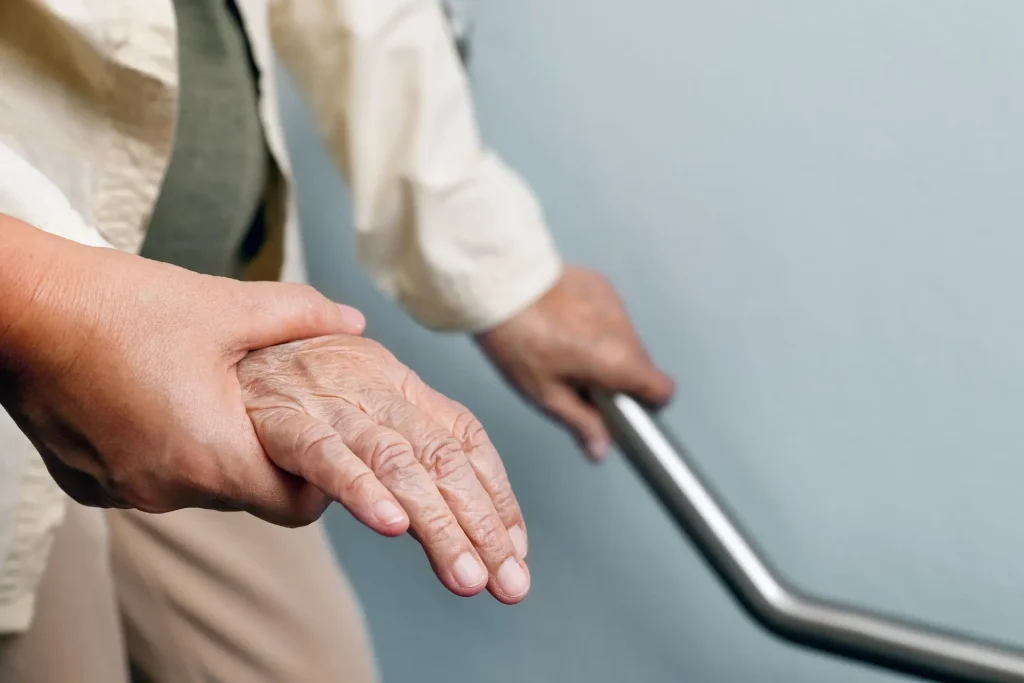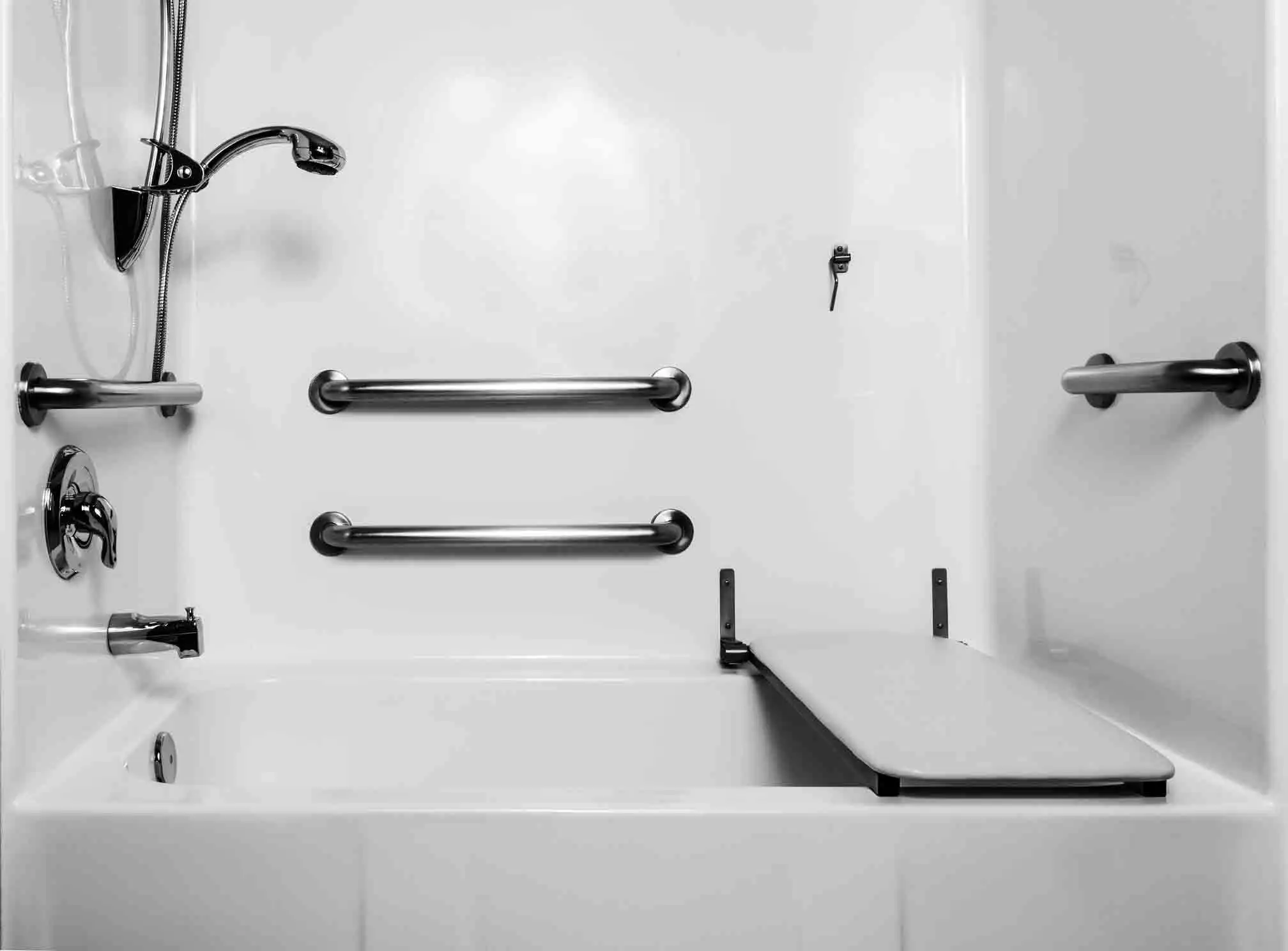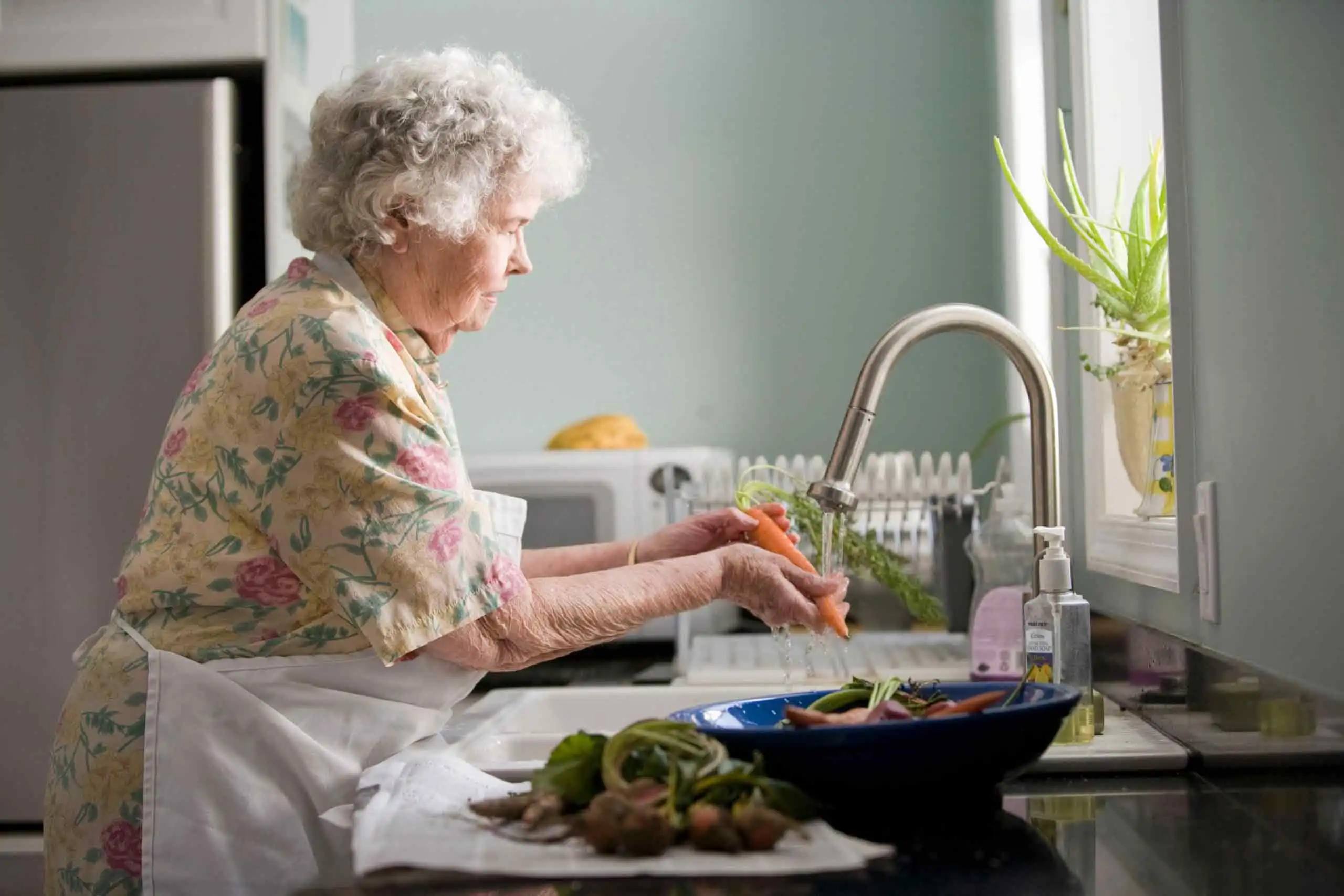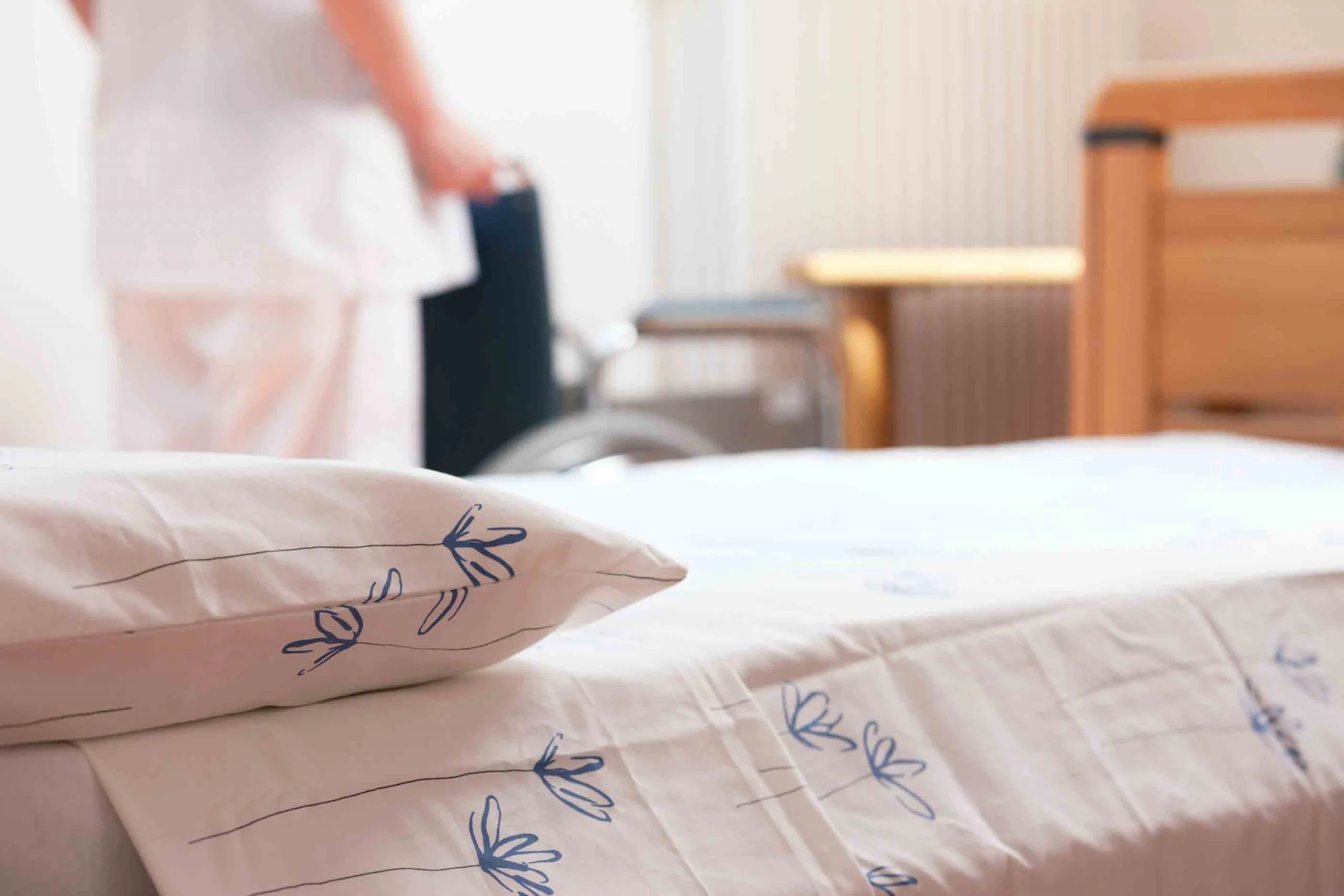
A Complete Home Safety Checklist for Seniors Living Alone
Do you want to have a home safety checklist for seniors living alone? Aging in seniors leads to a decline in the effectiveness of the five senses (smell, taste, sight, hearing, and touch). The changes of aging and decrease in the five senses’ effectiveness definitely causes a decline in the ability to discern and distinguish in the elderly. This lack of discernment, along with decreased bone density, osteoporosis, and loss of balance while walking, are dangers that can threaten the health of seniors.
We can’t do anything about the loss of discernment and the onslaught of diseases that attack the health of seniors as a result of aging. The only thing we can do is provide a safe and secure environment for seniors to live in the home where they reside. Some seniors live with other family members, and there is always a family member with the senior to meet their needs, but another group of seniors lives alone in their home, and if any problem arises for them, there will be no one to help them.
By preparing a home safety checklist for seniors living alone in this article from the Human Health Mag website, we will explain the principles of home safety for elderly that live alone, principles of securing homes where one or two seniors live alone. A safe living environment is one of the first needs that a senior living alone requires. Is the living environment of your senior family member, whether it’s a house or an apartment, safe enough for them to live in comfortably? Are your neighbors trustworthy?
Home Safety Checklist for Seniors Living Alone: General Safety Tips for Caring for Seniors at Home
Given the importance of senior health, it’s essential that you and those around you know the simple and important tips for caring for seniors, and that you are aware of and prepared for potential dangers in the home that threaten their health. Below is a list of safety items related to caring for seniors at home:
- Avoid smoking inside the home.
- Ensure that the senior gets up slowly from the bed or chair and maintains their balance.
- Ensure that the senior’s shoes are appropriate and have a low heel.
- Note that if needed, a walker of appropriate height should be used.
- Remove all small rugs in the home.
- Make sure that electrical and phone cords are not in the senior’s way.
- Be careful not to use slippery materials on the floor of the house, restroom, and bathroom.
- Clean up spills on the floor immediately, properly, and completely.
- Prevent the senior from standing on ladders or chairs.
- Ensure that all stairs inside and outside the home have protective handrails. If needed, a stairlift can be used.
- Only use 100-watt anti-glare light bulbs.
- Ensure that all staircases have proper lighting and that the light switches are installed at the beginning and end of the staircase.
- Make sure that the stair surfaces are not slippery.
- Consider using a medical alert system.
- Equip all rooms in the home with a fire extinguisher and a smoke sensor.
- You should modify steep slopes or stairs according to the senior’s ability.
- Install smoke and fire alarms near bedrooms and the kitchen, and a carbon monoxide detector on every floor. The batteries for these alarms should be checked regularly and replaced if they are weak. You should plan a fire escape route and illuminate it with your lights in case of an accident.
- The entry and exit routes to the rooms should be free of any obstacles.
- Adjust the hot water temperature in the home according to the senior’s needs.
- Keep a fire extinguisher accessible and in a designated location.
- Repair or replace problematic electrical outlets and appliances.
- Keep cords out from under rugs and carpets to prevent falls or electrical shorts.
- Check the locks on doors and windows and change them if necessary.
- Adjust the temperature and cooling within the home with the help of an HVAC specialist so that the senior is comfortable.
- If possible, place communication devices like a phone and a neighbor’s doorbell within reach of the person.
- If the senior needs to use a wheelchair or other home safety equipment for the elderly, special pathways for wheelchair movement should be created.
- Write important and emergency phone numbers on a large board so the senior can read them easily.

Home Safety Checklist for Seniors Living Alone: General Safety Tips Related to the Bathroom and Restroom
Among the challenges of caring for seniors at home is their use of the bathroom and restroom. Important points to consider for elderly bathing at home are listed below:
- Leave the restroom lights on at night.
- Ensure that safety devices are installed on the floor, walls, and around the shower. Similarly, for the restroom, safety devices need to be installed on the walls.
- Make the bathtub non-slip and ensure that the mat in front of the bathroom is anti-slip.
- To prevent the senior from getting burned, set the water heater temperature below 120°F (50°C).
- Properly mark the hot and cold-water faucets with colors or other signs.
- Use doors that can be opened from both sides.
- If possible, the senior should only bathe when someone else is present in the home.
- Use non-slip floor coverings inside the bathroom to prevent seniors from slipping and getting injured.
- Choose contrasting colors for the non-slip bathroom floor coverings. For example, use a dark gray floor covering next to a light gray one so that the bathroom floor is discernible to the senior.
- To prevent slipping inside the bathroom, use plastic slippers with grips. Do not use sponge slippers.
- Use a shower chair with armrests for seniors to sit on while in the shower. If the bathroom space is small, you can use folding wall-mounted shower chairs.
- Use assistive wall handles for seniors along the path to the bathroom and inside the bathroom area. By using these handles, the senior can prevent themselves from falling and can use them for assistance when getting up and sitting down. When using handles for seniors in the bathroom, use the stainless-steel type to prevent rusting.
- Install a shelf in the bathroom for easy access to your essential medications.
- Never lock the bathroom door from the inside.
- If you cannot stand on your own two feet, use a shower wheelchair or a wheeled shower chair for bathing.
- Before buying a wheeled shower chair or a shower wheelchair, make sure the size of your bathroom door is such that the shower chair or wheelchair can pass through it.

Home Safety Checklist for Seniors Living Alone: General Safety Tips Related to the Kitchen
The kitchen can be one of the most dangerous places for seniors. If you are planning to care for seniors at home, you should consider the following tips:
- Keep the kitchen floor clean and uncluttered.
- Ensure the kitchen is well-lit when in use.
- Label the on and off buttons of kitchen appliances.
- Store sharp knives in a suitable rack.
- Use a kettle with an automatic shut-off feature.
- Store hazardous materials in a completely separate area from food items.
- Make sure the senior doesn’t wear long, loose clothing while cooking.
- Always check the expiration date of food items.
- Kitchen appliances, dishes, and food items should be placed in an accessible location.
- Place heavy kitchen appliances and dishes on the lower shelves of the cabinets. Move lightweight items to the upper shelves.
- Use a sturdy and safe step stool to access the upper shelves.
- Equip the kitchen with a fire extinguisher. The fire extinguisher should be located away from the stove.
- If the senior uses a wheelchair, the height of the cabinets and stove should be such that the person has easy access to them.
- Use a grabber tool to retrieve lightweight items from inside cabinets or shelves.
- Use heat-resistant gloves instead of potholders to handle hot objects.
- Avoid using cabinets located directly above the stove.

Home Safety Checklist for Seniors Living Alone: General Safety Tips for Adapting the Bedroom for Seniors
- Place a light switch near the bedroom entrance and next to the senior’s bed.
- Use a nightlight with adequate illumination in the bedroom so that if the senior wakes up at night, they don’t have any problems.
- The senior’s path from the bedroom to the bathroom and restroom should be clear of obstacles and be equipped with appropriate wall handrails.
- The height of the senior’s bed should be neither too high nor too low.
- If the senior’s bed does not have a bed rail and there is a possibility that they might fall to the floor while sleeping, use a bedside safety rail for seniors. This type of bed rail does not require installation and can be easily placed under the mattress to prevent falls.
- Seniors should change their position slowly from sitting to lying down or standing up. For this purpose, you can use a bedside rail or a walker for assistance.
- Place a phone with a list of emergency numbers next to the senior’s bed.
- If the senior cannot travel the distance between the bedroom and the restroom, you can use a commode with a container next to their bed.
Home Safety Checklist for Seniors Living Alone: General Safety Tips Related to Medications
Seniors usually need to take medication. One of the important aspects of caring for seniors at home is paying attention to their medication schedule. In this regard, adhering to the following points is very important:
- Be sure to regularly review the senior’s medications with a doctor or pharmacist, especially when a new medication is prescribed.
- Ensure that medications are properly labeled or use a pillbox.
- Discard old or expired medications and keep them out of the senior’s reach.
- Never use someone else’s prescription.
- Always consult with the relevant doctor before giving the senior any other medication.
Concluding Remarks
We have prepared a home safety checklist for seniors living alone for you. The safety tips mentioned in this article are some of the most important principles that you should consider to create a safe and secure environment for the elderly person. We have explained this in detail and reminded you of what you need to do to ensure the safety of each area of the home, including the bathroom, toilet, bedroom and hallways.
This home safety checklist for seniors living alone is designed to create a safer environment at home. Removing hazards or other dangerous items can reduce hospital visits, extend the person’s ability to stay at home longer and minimize crises. If safety is a concern or you need home safety supplies, please speak to one of clinical care educators who can give you more advice for your specific situation.
Don’t just read; also engage and inspire! What did this post teach you, and how will you apply it? Please leave your thoughts in the comments, and let’s learn from each other!

Frequently Asked Questions
Here are five frequently asked questions about a home safety checklist for seniors living alone:
What are the most common risks for seniors living alone?
The most common risks include falls, which can be caused by tripping hazards like rugs or cords, and issues with fire safety, such as leaving a stove unattended. Medication management is also a significant concern, as mistakes in dosage or mixing different drugs can lead to serious health problems.
How can I make the bathroom safer for a senior?
Bathrooms are a high-risk area for falls due to slippery surfaces. You can make it safer by installing grab bars in the shower and next to the toilet. Using non-slip mats both inside and outside the shower is crucial. Also, consider a shower chair to allow the senior to sit while bathing, which helps prevent fatigue and loss of balance.
What can be done about home security for a senior?
Home security is a top priority. Make sure all doors and windows have secure locks. A medical alert system is highly recommended, as it allows the senior to call for help with the push of a button. Additionally, ensure emergency contact numbers are clearly visible and easily accessible by the phone.
How can I help a senior manage their medications safely?
Safe medication management is vital. A pillbox with compartments for each day of the week can help a senior organize their pills and remember when to take them. Set up regular check-ins with a family member or caregiver to monitor their medication schedule. It’s also important to dispose of expired or unused medications to avoid accidental use.
What is the most important step to take for overall home safety?
The single most important step is to conduct a thorough home safety audit. Walk through every room with a checklist to identify and fix potential hazards, from loose handrails to faulty electrical cords. This proactive approach helps prevent problems before they occur and provides peace of mind for both the senior and their family.
